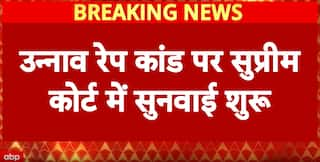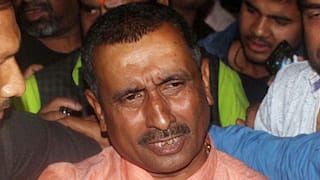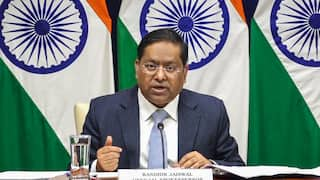India Is Predicted To See 1.5 Billion Internet Users By 2040: What Impact Will It Have On Our Economy?
Is India taking Internet seriously? Given the benefits of online connectivity the country has seen in the post-lockdown era, it’s hard to say otherwise.

India is slowly — but steadily — establishing itself as a major player in digital economy. No matter which factor you consider, be it app downloads or even the penetration of Internet among the masses, the volume and growth of India’s digital economy exceed those of several other nations, as per a study by McKinsey Global Institute (MGI). As per Statista, India will have 1.5 billion Internet users by 2040. Now, it should be noted that a 10 percent increase in broadband penetration results in a growth of 1.38 percent in the gross domestic product (GDP) of developing countries, as per a World Bank study.
So, given the Statista prediction, let’s take a close look at what impact the Internet and its popularity will have on the Indian economy in the coming years.
Where does India's Internet usage stand in 2022?
India now has a population of 1.4 billion. Out of that, the country had 658 million Internet users as of January 2022, as per the Digital 2022 study by DataReportal. At the beginning of this year, the Internet penetration rate in India stood at 47 percent of the total population.
Between 2021 and 2022, the number of Internet users increased by 34 million, or 5.4 percent, as per global analysis firm Kepios.
As per Ookla data, the median mobile Internet connection speed (cellular network) stood at 14.39Mbps in India in January 2022, while the median fixed Internet connection speed stood at 47.40Mbps. As the country adopts 5G services, expected to roll out later this year, the mobile connection speed is expected to increase by leaps and bounds. 5G trials by Reliance Jio and Bharti Airtel showed 5G speeds to go up to 1Gbps. So it is safe to speculate the median mobile Internet speed could stand at over 100Mbps once 5G is rolled out.
In terms of social media usage, the Digital 2022 data showed that India had 467 million users across popular platforms such as Facebook, Twitter, Instagram, and LinkedIn, as of January 2022. This marked an increase of 19 million, or 4.2 percent, as per Kepios.
Lastly, as per GSMA Intelligence data, at the beginning of this year, there were 1.14 billion cellular mobile connections in India. It should be noted that one cellular mobile connection doesn’t directly refer to one single user, as people usually have multiple connections (for example, one for personal use while another for professional needs). The GSMA data signifies that nearly 81.3 percent of the total population in India had mobile connections.
Between 2021 and 2022, India’s mobile connections increased by 34 million, or 3.1 percent.
What is envisioned for India’s Internet usage in the future?
Before we look at the future, let’s talk about BharatNet.
Founded nearly a decade ago, the Centre-owned broadband infrastructure provider BharatNet looks to provide broadband connectivity (minimum speed of 100Mbps) to all gram panchayats in the country, covering close to 625,000 villages. This is vital for Internet penetration because, for a rural-driven economy like ours, a proper Internet-connected India is hard to envision without onboarding rural users.
As per BharatNet’s latest usage figures available online (June 27), over 1.04 lakh Wi-Fi hotspots have been installed in different gram panchayats, out of which 53,600 are active. As for fibre-to-the-home (FTTH), over 2.07 lakh connections have been deployed. In May 2022, a total of 2,137.55 TB of data was consumed via BharatNet.
Minister of State for Electronics and Information Technology Rajeev Chandrasekhar believes BharatNet will help India achieve the 1.5-billion mark within 2023. “As the rural broadband Internet connectivity programme of the BharatNet starts kicking in and lighting up homes in the villages, we will have 1.5 billion Indians being connected to the Internet over the next two years,” he said during an interview in October 2021.
“India is going to be one of the largest connected nations in the world,” Chandrasekhar added. “I already think India is the largest connected country in the world because China is not connected — because it has an intranet, walled-off island that pretends to be the Internet.”
As of 2018, India had already overcome China in terms of mobile data consumption. Indian users consumed 8.3GB of data each month, while china saw a monthly data consumption of 5.5GB for mobile users.
As per MGI data, the average Indian social media user spends 17 hours on Facebook, Twitter, and other platforms each week, which is notably more than social media users in China or even the US.
So, what is driving India’s Internet adoption?
When it comes to driving Internet adoption in India, two factors play a major role — decreasing cost and increasing availability. As per MGI, decreasing cost of smartphones and Internet services definitely plays a major hand in the penetration of Internet in India. Add to that an increased availability of smartphones as well as high-speed Internet connectivity across more and more locations, and you have greater penetration than ever before. The idea is simple — if you make a service cheaper and easily available to the public, you will see better adoption rates.
Even back in 2014-17, India stood only second to Indonesia in terms of digital adoption growth within a county, as per MGI.
How will increased Internet adoption help India’s economy?
An MGI study reveals that a greater adoption of Internet will transform India’s economy for the better, sector by sector, by 2025.
Financial services could see a 170-times increase in growth potential. Jobs and skills may see a 70-times growth. The agriculture sector can be boosted by 70 times in terms of growth. Additionally, education, logistics, and retail will see a 50-times, 30-times, and 11.7-times growth, thanks to digitisation, as per MGI.
As mentioned earlier, the penetration of Internet and the consequent digitisation of services will have a positive impact on India’s GDP. As per a joint study by the Indian Council for Research on International Economic Relations (ICRIER) and Broadband India Forum, Internet contributed 5.6 percent to the overall growth of India’s GDP in 2015-16. That number went up to 16 percent by 2020. A contribution of $537.4 billion was made by Internet towards India’s GDP in 2020. Out of this, at least $270.9 million was contributed by apps.
The COVID-19 pandemic and its subsequent lockdowns showed the vital role digitisation and the Internet can play in a country’s functioning. While ePharma apps and online health consultations saw a boost during this time, online payments also saw an increased adoption — effects of which are still seen more than two years later.
For example, did you imagine taking an auto-rickshaw ride and paying by scanning UPI codes? Or, did you picture yourself consulting with doctors from the comfort of your home, or even joining virtual classrooms from leading global universities from your hometown? Thanks to digitisation and broadband penetration, things like these have become commonplace in urban cities, and it is expected that as more and more rural users adopt UPI and online usage (beyond just OTT streaming and social media), digital practices will only become second nature to users in the country.
Needless to say, there are certain industries that are solely based on Internet — cryptocurrency being a notable one. India is looking at introducing a Central Bank Digital Currency (CBDC) soon to tap into the crypto space, which will exist solely on a blockchain, which is powered by — no surprises — the Internet.
The vitality of Internet
Back in 2016, the United Nations declared that Internet is a basic right and is vital for everything that lies between right to freedom of expression and unlocking the full potential of human rights. In 2020, Kerala became the first Indian state to declare Internet as a basic human right.
There are instances where the Centre has come down hard against its own vision of Digital India — be it Internet shutdowns during riots, or apprehending potentially “bad actors” based on their social media posts.
However, despite considering all such instances, there’s no denying the fact that India is taking its Internet seriously, and given the advantages it can bring to the country’s overall growth, Internet will indeed play a vital role in the development of our national economy in the future.






































